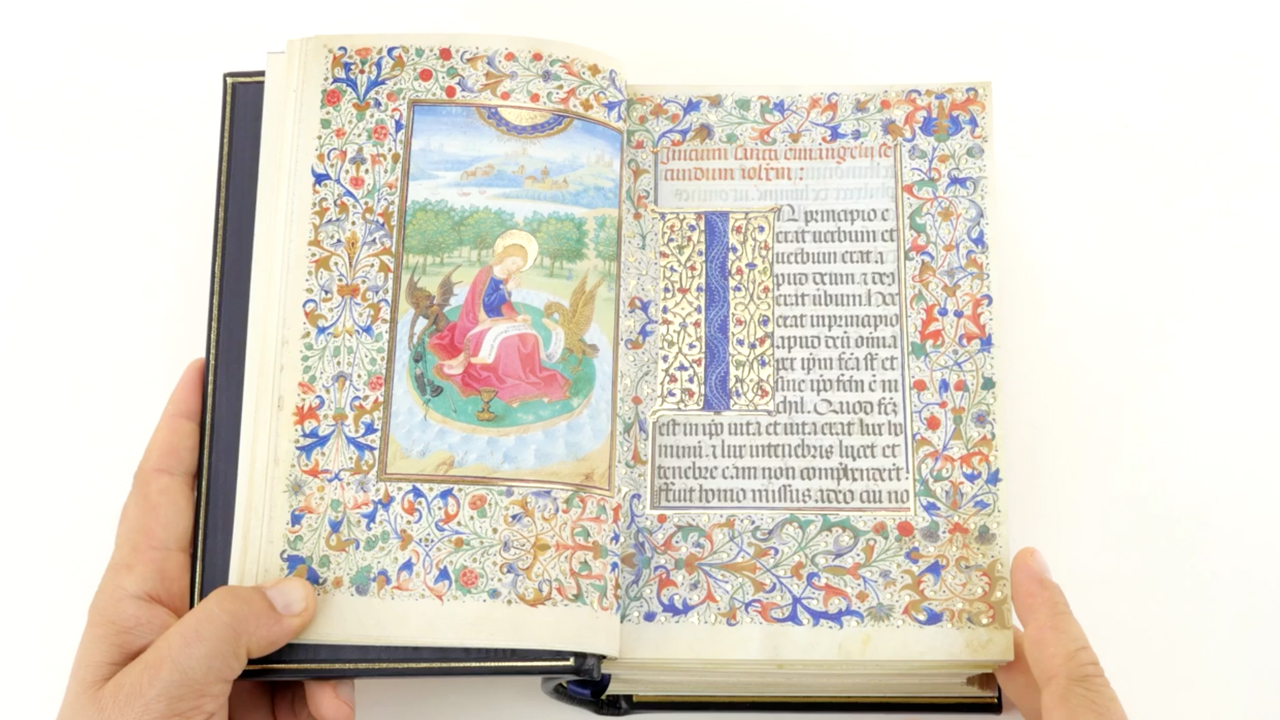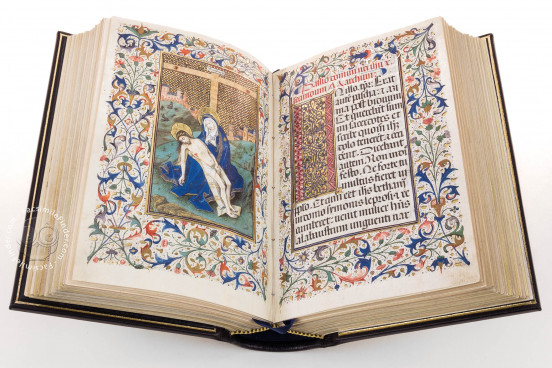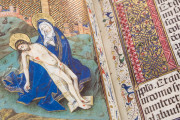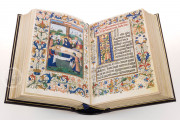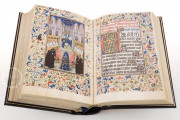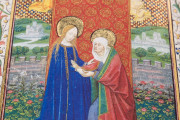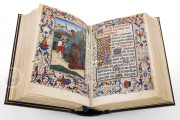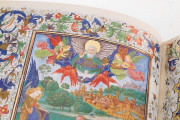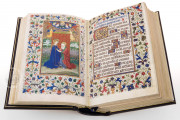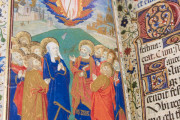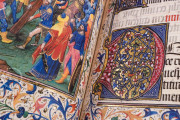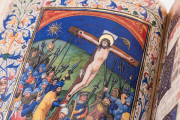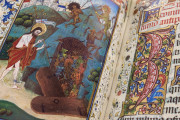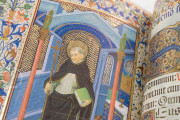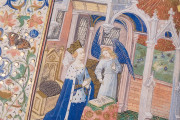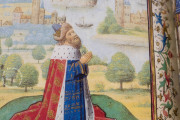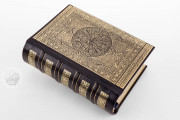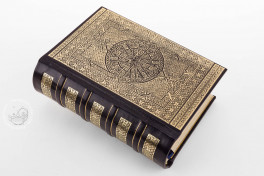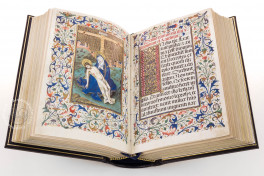The Hours of Juana Enríquez was attributed by the great specialist in Flemish miniatures Paul Durrieu to William Vrelant. Born in Utrecht, Vrelant set up his workshop in Bruges and was one of the greatest miniaturists of the fifteenth century. This manuscript is today treasured at the Library inside the Royal Palace (Biblioteca del Palacio Real) in Madrid. The codex features an incredible richness of illuminations, together with an exceptional abundance of liturgical texts.
A Patroness Called Juana
It seems almost certain that the first person to own this codex was a woman. Indeed, three different miniatures in the book feature a depiction of a lady on her knees: her name, occurring four times in the text, was Juana. Two folios (37 v. and 343 v.) display a coat of arms suggesting that the book was made for Juana Enríquez, Juan de Aragón's second wife. From her, the books would later pass to Isabel the Catholic and then to her heirs until, finally, coming into the possession of Philip IV of Spain.
Quite unusually for a fifteenth century Flemish or French book of hours, a series of prayers in the text feature a Catalan title. Another reference to the Catalonian environment can be seen in the Suffrages to saints: here, one of the suffrages (a short prayer) and its corresponding miniature are dedicated to St. Eulalia, patroness of Barcelona.
Beautiful Architectural Frameworks
A predominant feature in this manuscript is the use of perspective, clearly influenced by the Siena school of the Trecento. Many figures are depicted within architectural frameworks, a common feature of French miniatures of the time of the Duke of Berry. These backgrounds play an important part in the work and, whether landscapes or abstract compositions, are very elaborate. Their wealth of detail is characteristic of the best Flemish workshops: according to Professor Angulo, Flemish artists achieved a perfection virtually unsurpassed in the rendering of draperies, metals, jewels, glass, leather, etc.
An Incredible Wealth of Miniatures
Of the 3.487 miniatures (seventy-two of them full-page) fifty-nine illustrate the essential and secondary texts, which are arranged under ten headings: the calendar, extracts from the four Gospels, Hours of the Holy Ghost, Mass of Our Lady, Hours of Our Lady, Hours of the Passion of Jesus Christ, Office for the Dead, Penitential Psalms, various prayers and Intercession of the Saints.
The other miniatures illustrate a large number of additional themes. We can also find an abundance of borders with traditional acanthus garlands, flowers, fruit, human figures, birds and small animals, as well as a large number of decorated capital letters (eighty-seven large, 181 medium and 2.964 small), with a variety of decorations including burnished gold.
The Gothic lettering of the written text is in black and red ink.
We have 2 facsimiles of the manuscript "Hours of Juana Enríquez":
- Libro de Horas de Isabel la Católica (Mudejar Binding) facsimile edition published by Testimonio Compañía Editorial, 1991
- Libro de Horas de Isabel la Católica (Luxury Binding) facsimile edition published by Testimonio Compañía Editorial, 1991

